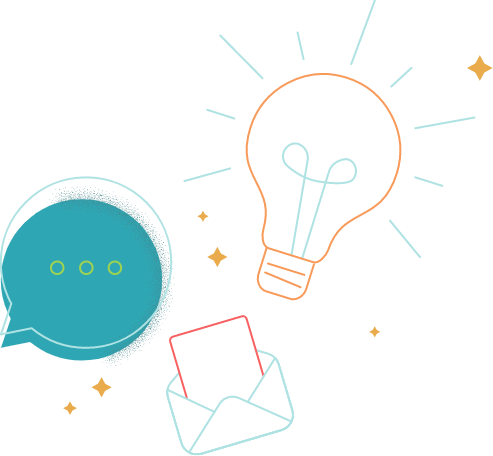On August 7th, 2025, OpenAI unveiled its newest iteration of the GPT model — GPT-5. Calling it their “smartest, fastest, most useful model yet,” their introduction claims to place “expert-level intelligence in everyone’s hands.”
Here, I’ll break down the most compelling changes to this updated model, when you can use it, who it’s available to, and what marketers can expect from ChatGPT and other GPT-based tools going forward.
GPT-5: When You Can Use It & What’s New
In a recent interview with Cleo Abram on her eponymous YouTube channel, Sam Altman, OpenAI CEO, said, “A kid born today will never be smarter than AI. Ever.” (34:45). That’s a significant claim. Still, the rate at which the technology progresses, perhaps it’s not so hard to believe anymore.
With the release of GPT-5, Altman alludes that we’re inching ever closer to superintelligence. But what are the grounded benefits of his newest model right now over previous generations? How can marketers begin using ChatGPT differently to support their workflows? And, do everyday users even like it?
GPT-5 Release Date & Availability
OpenAI officially released GPT‑5 as its flagship model on August 7, 2025, making it immediately available to users across free, Plus, Pro, Team, Enterprise and education tiers via ChatGPT and the API.
GPT-5 New Capabilities: Broad Overview
Before we explore marketing-specific use cases for GPT-5’s latest abilities, here’s a broad overview to bring you up to speed on some of the model’s most compelling advancements:
Faster, More Accurate, and More Useful
GPT‑5 responds more swiftly and accurately to inputs than its predecessors. I’ve noticed this in my short time with it so far — time from hitting “enter” to text-on-screen feels much snappier. Additionally, the new model is said to have a significant reduction in hallucinations (up to ~80%) and sycophantic responses. Basically, ChatGPT, which now runs on GPT-5 by default, won’t be as flattering or agreeable, and instead favours forthrightness and honesty in its responses. So, if you ask it to do something without proper preparation or instruction, it should tell you so, so you can fine-tune your request.
Oh, and they say it will use far fewer “unnecessary emojis,” too.
In terms of subject matter, OpenAI says GPT-5 performs well (better than previous models) on writing, coding and health care-related queries, which are the three most common applications for ChatGPT.
Advanced Developer Controls
Developers now benefit from enhanced API features, including the ability to tailor response length and style, and enforce strict formatting.
Variants for Every Use Case
GPT‑5 comes in multiple tiers: Standard, Mini and Nano for varying speed, cost and access. GPT‑5‑Pro and “GPT‑5 thinking” are available for extended reasoning and are primarily available to paid users.
Subscribe to the ai marketer
Weekly updates on all things ai in marketing.
GPT-5 Marketing Use Cases: What Can You Expect For Your Workflows?
While these announcements never seem to mention marketing outright, many of GPT-5’s claimed capabilities stand to improve marketers’ workflows and processes — mostly passively — if they’re already using ChatGPT.
While a swath of users aren’t happy with the upgrade (more on that later), here’s what marketers can expect from GPT-5, if it lives up to how it’s advertised:
Better Content Creation
If OpenAI’s hallucination claim holds, it makes GPT-5 inherently more trustworthy for producing fact-based content. Still, that doesn’t mean you should stop fact-checking it. It’ll undoubtedly still make errors; with this improvement, you may just find yourself spending a little less time searching for alternative sources. Again, you should still definitely be validating what it gives you, at the very least.
Saved Time and Less Guesswork Via Automatic Model Selection
GPT-5 offers a new deep reasoning mode called “GPT-5-thinking”. With it, the system automatically decides whether to use the faster, general-purpose model for quick tasks — like drafting a Facebook post or producing short ad copy — or the deeper reasoning model for more complex work, such as developing a multi-channel campaign strategy. This means marketers no longer have to manually switch between models or guess which one will yield the best results; the router optimizes for them in real time, based on the complexity of the request.
More Customization
GPT-5 now offers stronger instruction-following capabilities, making custom instructions more precise and reliable. In addition, a research preview introduces four preset personalities — Cynic, Robot, Listener and Nerd — designed to match different communication styles without the need for custom prompts.
For marketers, this means ChatGPT can now feel more like a creative partner that “gets” your brand’s tone from the start. Whether you want a concise, professional pitch, a warm and supportive customer response or a witty, tongue-in-cheek social post, the new personalities make it faster and easier to hit the right voice with less back-and-forth prompt tweaking. If these presets are successful, I bet we’ll see more.
GPT-5 turns ChatGPT from a very good assistant into a full-stack marketing co-pilot that can handle strategy, creative production, personalization and reporting in a single workflow. The biggest leaps, however, are in accuracy, context retention and integrated multi-format reasoning, meaning marketers can now manage entire campaign lifecycles without juggling as many tools or losing creative consistency.
GPT-5 First Impressions
It’s still early days for GPT-5 — literally. As of wrapping up this blog post, it’s been just six days in the public’s hands. But first impressions and future outlooks have already begun pouring in across blogs, forums and YouTube videos, and it’s a mixed bag.
Many are impressed by the practical upgrades GPT‑5 brings to the table — like faster response times, enhanced accuracy, multi-format reasoning and an expanded context window. Coding applications, too, seem to be where GPT-5, particularly GPT-5 Pro, shines brightest.
Despite its strengths, everyday users have taken to social platforms like Reddit to express discontent, complaining about:
- Perceived regression in conversational quality.
- A cold or less personable tone.
- Usage caps, especially on “GPT‑5 thinking”.
A Wired report reveals that the rollout sparked enough backlash that OpenAI had to re-enable access to GPT‑4o and pledge improvements to the model-switching logic and rate limits.
An Evolution, Not Revolution?
Thus far, GPT-5 has earned some praise for its benchmark performance, reasoning capabilities and toolkit improvements, positioning it as the most capable version yet in technical terms. But for many regular users, the launch has felt underwhelming, highlighting a tension between raw AI capability and user experience.
In the end, does it deliver any meaningful advancement? Yes, but maybe mostly for complex, enterprise-grade tasks and coding. Does it meet all expectations across the board? Not quite.
It’s been just shy of a week since release, so I don’t doubt that more tweaks, updates and announcements from OpenAI are on their way. It’ll be interesting to see where the consensus settles after GPT-5 has spent more time in the public’s hands.






